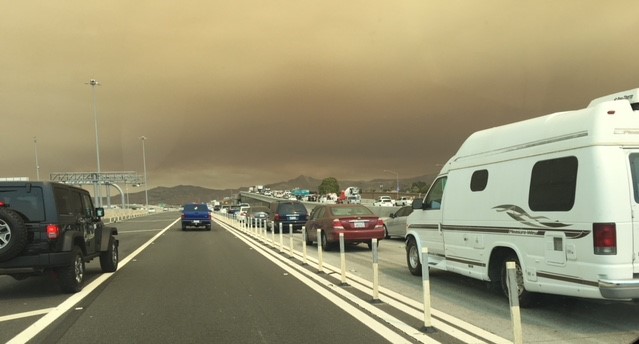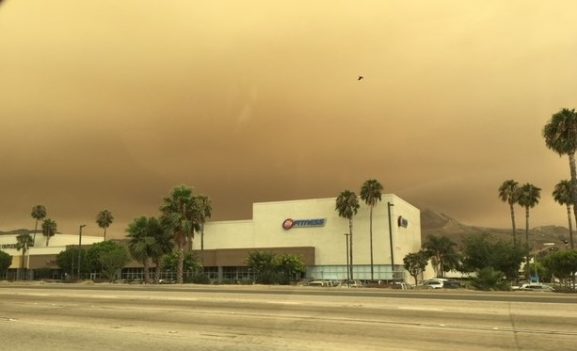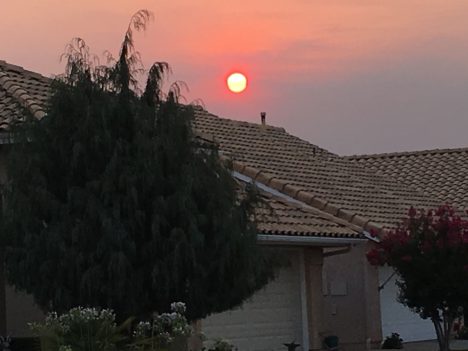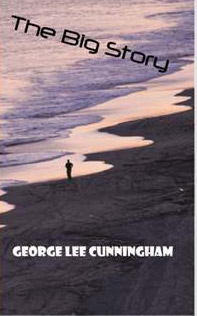FEATURED POSTS
-
August 12, 2018
How Do Environmentalists Sue A Forest?

CORONA, CALIFORNIA AUGUST 2018 — Photo by Carmela Cunningham
California natives are found of describing the four seasons as fire, mudslides, drought, and earthquake.
That, of course, is more whimsical than real, but California is an extreme state and the weather is no exception. And it does somewhat tie together. A rainy winter, causes the brush to grow thicker which means when the drought rolls around, there is more dried-out wild vegetation to burn. On the other hand, the authorities also warn that a drier winter means the underbrush will be even drier than usual, which means that the fire season will still be bad. There is no winning. When the vegetation burns away it leaves the hillsides bare, which means that when the rains return there will be massive mudslides.
Earthquakes are the outlier in all this. They can happen anytime in the year and they always exacerbate whatever widespread disaster is taking place at the time.
I think there should be another disaster season in California – the whacky-politician season. California left alone is the most beautiful state in the nation. When politicians and political activists get involved, the entire state turns into a giant refried mess.
What brings this to mind is that this is the fire season in California. The hills are burning away and the haze and ash hangs in the sky like a post-apocalyptic preview for the end-times.
Welcome to the Golden State.
As it turns out, the last week of forest fire in Northern California alone has put more pollution in the air than an entire year of automobiles and trucks state-wide. That fire, although huge and expected to burn for weeks to come, is only one of several forest fires in the state so far this year.
And that’s not the worst of it. Pollution from cars and trucks has been studied to death and even exaggerated in order to support expensive and onerous air-control regulations that add to the cost of cars, trucks, and fuel. The pollution from forest fires has not undergone the same level of scrutiny. Each different species of trees that burn put a different mix of particulate matter into the air, a mix whose health effect is little understood.

RIVERSIDE, CALIFORNIA AUGUST 2018 — Photo by Carmela Cunningham
A secondary effect is how forest fires set back efforts to reduce greenhouse gas emissions, particularly carbon dioxide that is thought to be a major factor in global warming. Living trees soak up carbon dioxide and release oxygen into the air. Burning trees release the carbon dioxide they absorbed over the years back into the air in sudden and massive amounts. No matter where you stand on global warming, California summers do appear to be getting hotter and the climate getting dryer.
But global warming is not the only reason for the increase in massive wild fires and maybe not even the primary one.
Former California Republican Assemblyman Chuck DeVore recalls forest product industry folks telling him in 2005 how difficult and expensive it was to do business in California. Over the ensuing years, the California timber industry shrank to less than half of what it formerly was.
The shortfall in timber was made up by wood imports from other countries. As the forestry industry declined, undergrowth in the forests was no longer being cleared and sick and dying trees no longer being removed. The environmental maintenance once performed by the timber companies was no longer taking place.
One result has been the intensity and frequency of fires has increased. All the burning underbrush and dead trees, which act as kindling, results in a fire that becomes so hot that it sterilizes the soil and makes it difficult for the forest to recover.
Eight months ago, the U.S. Forest Service and Cal Fire issued a joint warning that 129 million trees have died on 8.9 million acres in California because of years of drought and an infestation of bark beetles. The problem is that the Forest Service is spending so much money on fire suppression that there is less available each year for reforestation, removal of dead trees, and watershed management.

BANNING, CALIFORNIA AFTERNOON SUN, AUGUST 2018 –Photo by George Cunningham
Spending more money of forestry – clearing out the undergrowth and taking out dead trees, would do more to reduce pollution than declaring war on refineries that supply the gasoline and diesel fuel we use in our cars and in the trucks that companies use to deliver the goods we need to market.
And it would create jobs. The underbrush and dead trees could be buried in a landfill, where they would decompose and eventually create methane that could at some point be drawn off and used as fuel, or they could be burned in an incinerator with scrubbers that would remove most of the pollution. Neither of those solutions is perfect, but in the real world, perfect is an ideal, not a reality.
It seems like common sense, but this is California, where common sense is not as common as one might think.
Do you have a dissenting opinion or any opinion at all on the subject? Contact me at george@georgeleecunningham.com and let me know. Meanwhile, you can always subscribe and get an email reminder of blog postings. Your name will not be shared and you may cancel at any time.






